There have been several amazing things that photographs captured. It is incredible that the photographic camera itself dates back all the way to the mid-to-late 1770s. Of course, the very first permanent photograph was not taken until 1826. The photo was captured by Joseph Nicéphore Niépce using a sliding wooden box camera, which had been made by Charles & Vincent Chevalier in Paris, France. Since then, we’ve tried to take photographs of everything possible. We developed better lenses, managed to get color, and even made our images move with sound attached! All of this allowed us to capture vintage science photographs people can still see today.
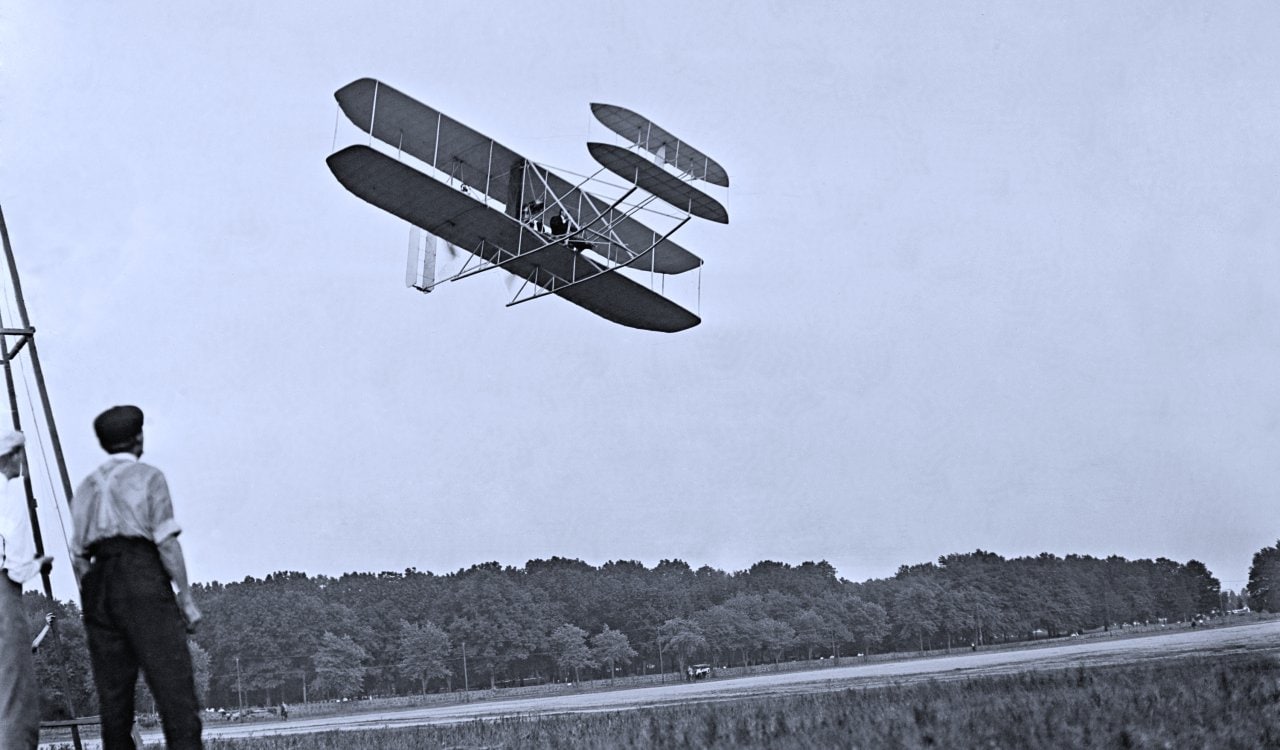
Wright Brothers Airplane Test
- Year Captured: 1909
Orville and Wilbur Wright had managed to invent the first airplane that managed to stay in the air after taking off. It took them quite a while to make it happen, as these two men were not aviation specialists in the slightest. They mostly knew the world of bikes, as that was their career before this. Yet in December of 1903, they took flight and made history with their Kitty Hawk Flyer, creating the first powered flight. In 1908, they were contacted by the U.S. Army to develop a two-seater plane for them. The Army saw the potential of airplanes and knew that they could be a huge asset in wartime. They did not know how right they would be. This image captures a test flight for the new plane. The Wright Brothers were paid $25,000 for the job. Taking inflation into account, that equates to roughly $600,000 in today’s money.
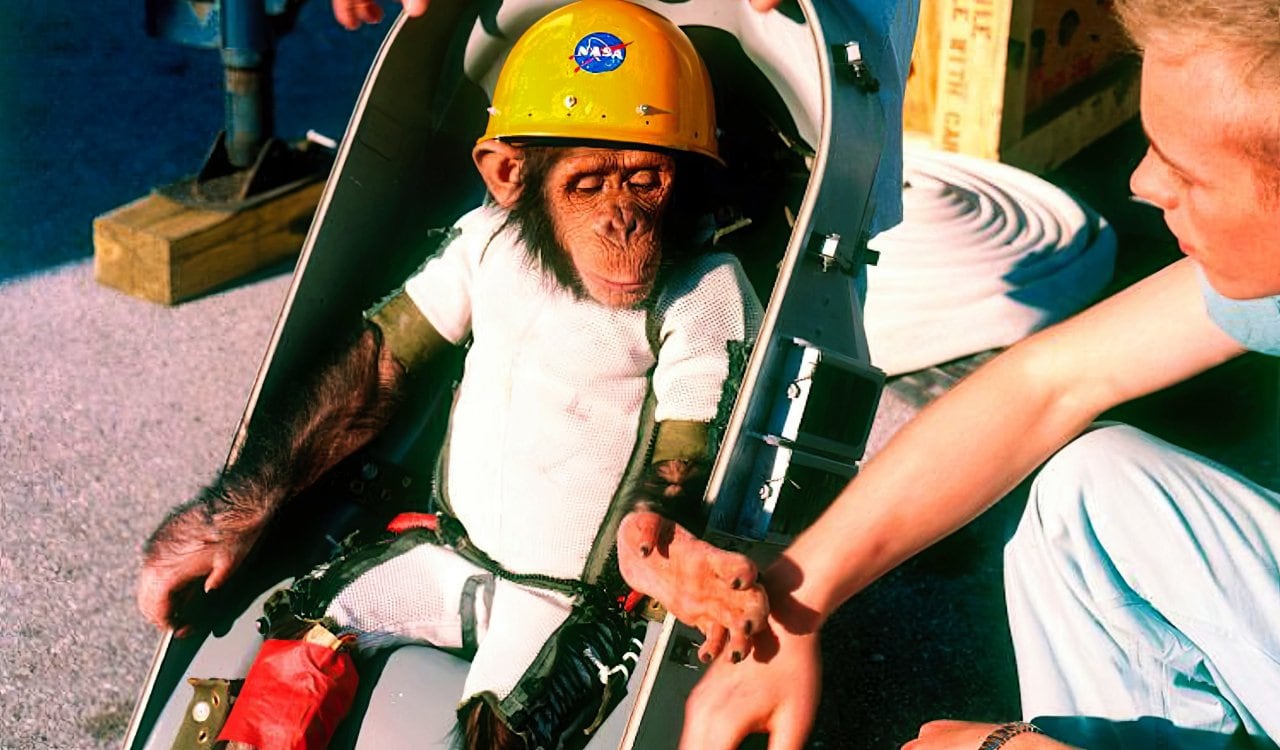
Enos The Space Chimp
- Year Captured: 1961
The first animal in space was a Russian dog named Laika. She managed to reach space and fly around a bit, but she tragically died only hours into the flight. Enos, a chimpanzee, was the first animal to make it into space and survive to orbit the Earth. He might have been the second chimp in space but he came back alive and did more than any animal before him. What’s so interesting is that he was the third hominid to orbit the Earth, only after the infamous cosmonauts Yuri Gagarin and Gherman Titov. NASA did not know what to expect when they launched him into space in 1961. However, Enos made history. A photographer managed to get one of the best vintage science photographs when they captured Enos with his trainer before he was launched into space. Initially black and white, color was added later on to bring the whole image to life.
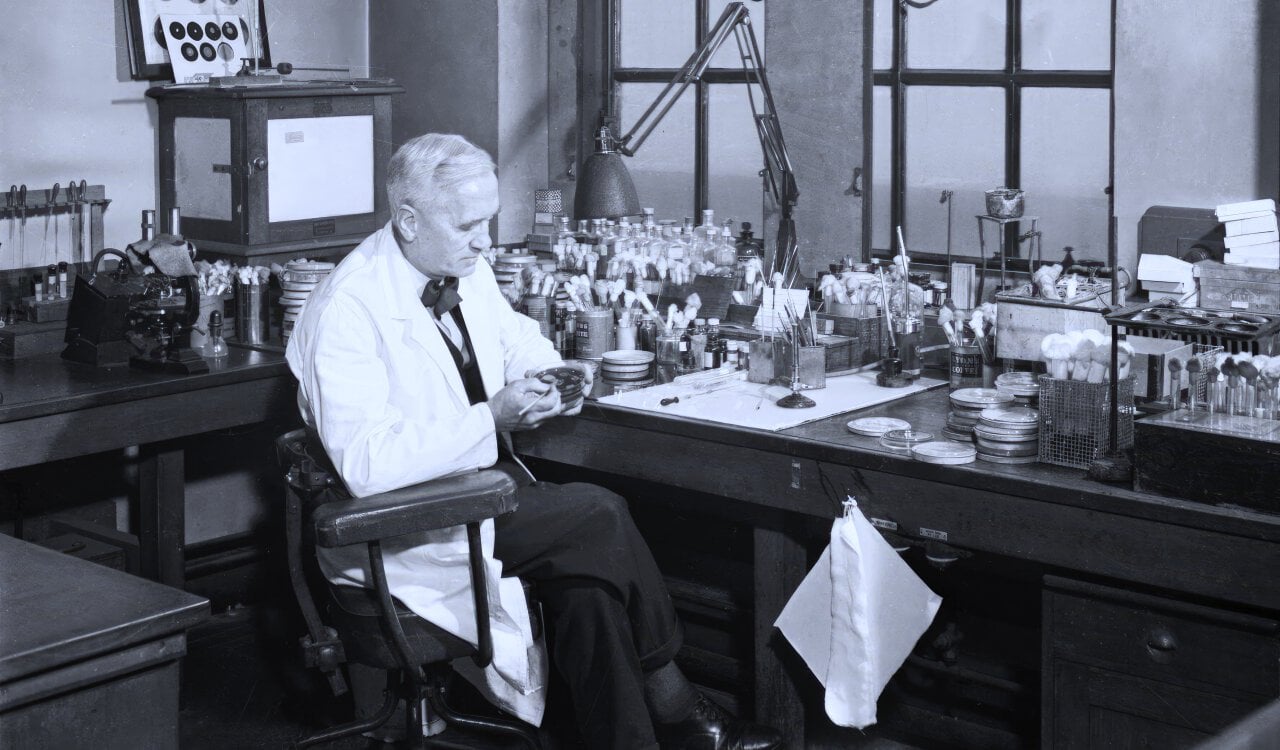
Alexander Fleming Studying Specimens In His Laboratory
- Year Captured: 1930s
Sir Alexander Fleming was a Scottish physician and microbiologist. By 1928, Fleming was already well-known for his work as an incredible researcher. However, his greatest discovery was about to happen. On September 3, 1928, he returned to his laboratory after spending a holiday with his family. Before he left though, he had put inoculated staphylococci on culture plates and left them on a bench in the corner of his lab. The culture was contaminated with a fungus and all of the staphylococci around the fungus were dead. The mold from this fungus was from the Penicillium genus, which Fleming was able to eventually develop into the first antibiotic we know today as penicillin. This discovery was built onto for the next several decades, giving us ways to battle infections far better than we could beforehand.
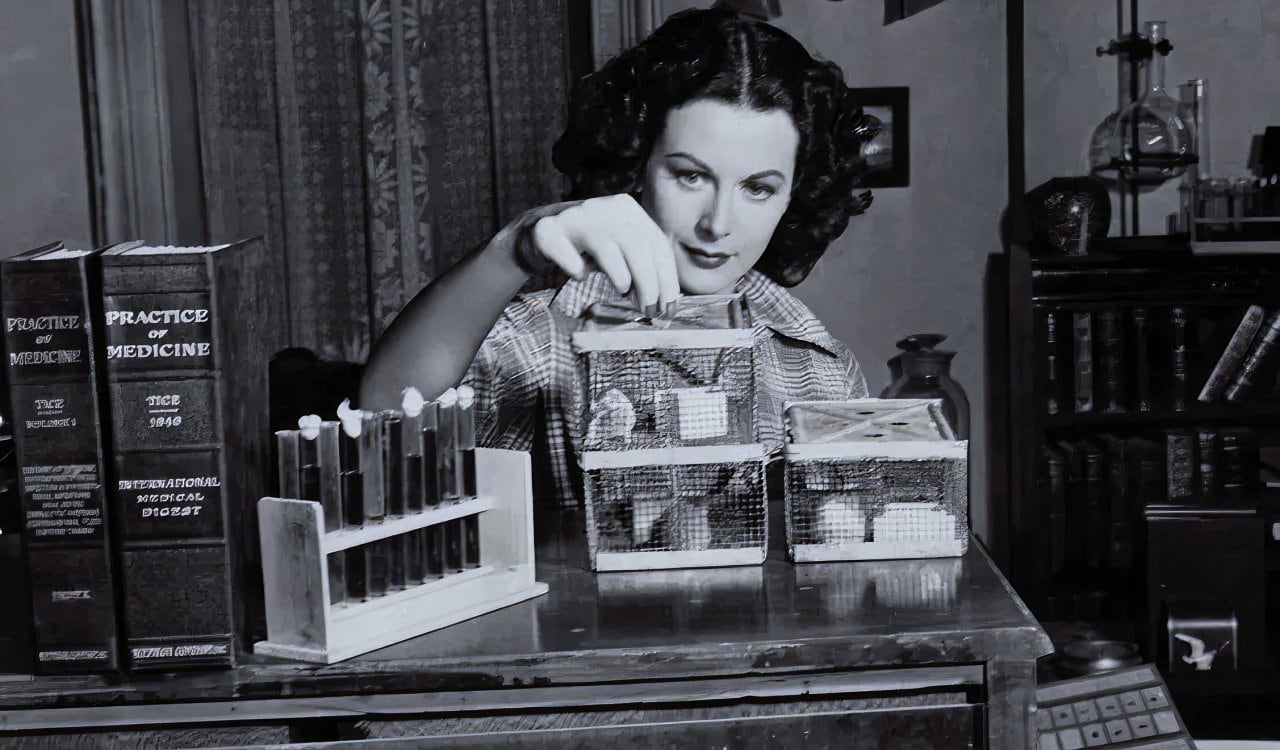
Hedy Lamarr’s Incredible Contribution To Science
- Year Captured: 1930s
If you’re using anything that does not require a wire to work, such as things like wireless internet or even Bluetooth, you have actress, Hedy Lamarr, to thank. She initially came up with her frequency hopping concept when she was working in a call center for a studio. Hedy was part of a team of people that would patch through callers to those they wanted to speak to. She actually shared her technique with the United States Navy, but they largely ignored her work for several years. Due to being a woman, she had to co-develop and patent her concept. However, years later her innovative work made it possible to use numerous wireless communications technology. From Wi-Fi and Bluetooth to GPS! This image captures a film legend that was also a genius that managed to change the world forever.
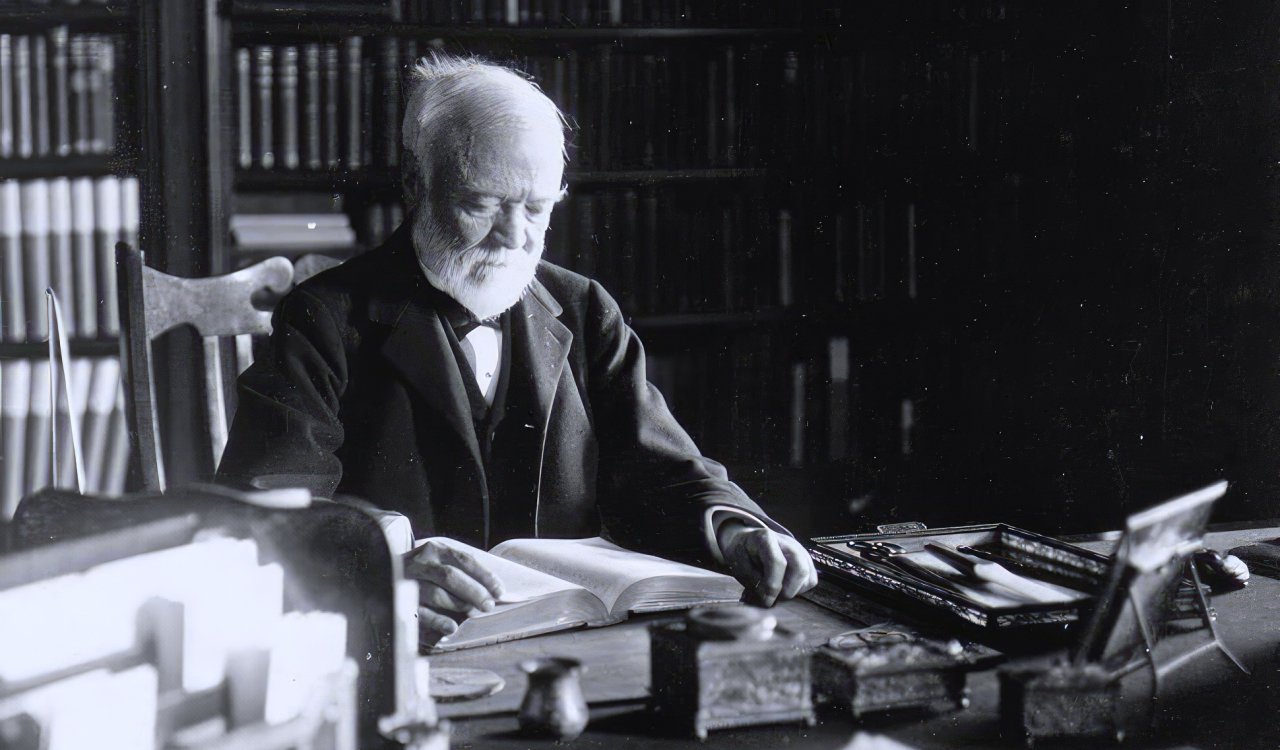
Andrew Carnegie Working At His Desk
- Year Taken: 1913
When we think of the name “Carnegie,” we think of places like Carnegie Hall or even Carnegie Mellon University. Before his incredible philanthropic work, Andrew Carnegie was a noted industrialist. The Scottish immigrant made a huge impact on the United States and the rest of the world, as he led the major steel boom in the late 1800s. This led to major railroads being made using steel as well as bridges that connected cities. While he was one of the richest people in America, at one point, he was “the” richest man. This happened when he sold his Carnegie Steel Company to JP Morgan. During the last 18 years of his life, he gave away $350 million which in today’s money would be over $5 billion. That led to a university as well as scientific and teaching institutions and much more. His impact on science is incalculable.
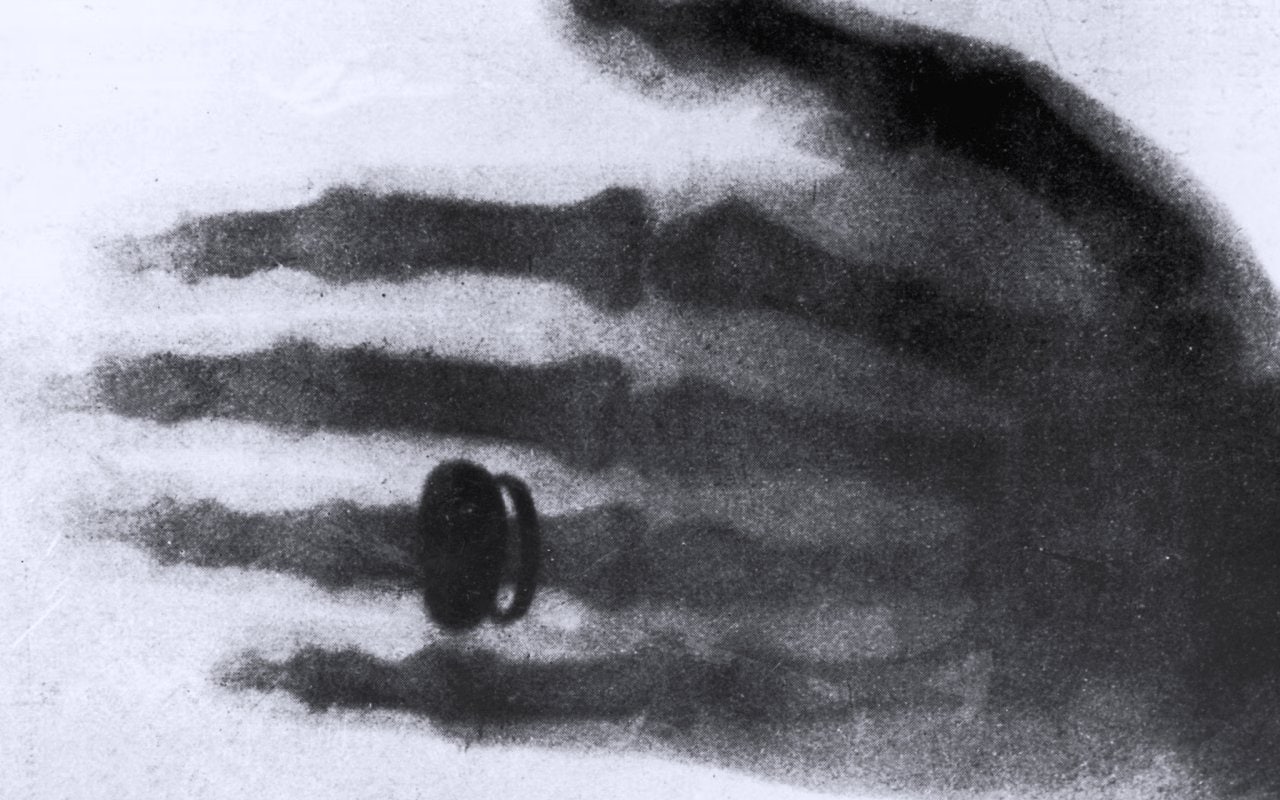
The First X-Ray Image Ever Taken
- Year Taken: 1895
Wilhelm Conrad Röntgen is a huge figure in science for multiple reasons. The German engineer and physicist won the inaugural Nobel Prize in Physics in 1901. Yet what makes him truly stand out in science is that he was the first person to capture an X-ray image. Wilhelm was messing around with a Crookes tube and a sheet of paper painted with barium platinocyanide. To his surprise, there was an illumination of the paper. Then in November 1895, he took the picture above of his wife’s hand, with her ring on. She reportedly said “I have seen my death” when he showed her the image. He would go on to x-ray a set of weights and a piece of metal. However, it is this defining image above that still stands out.
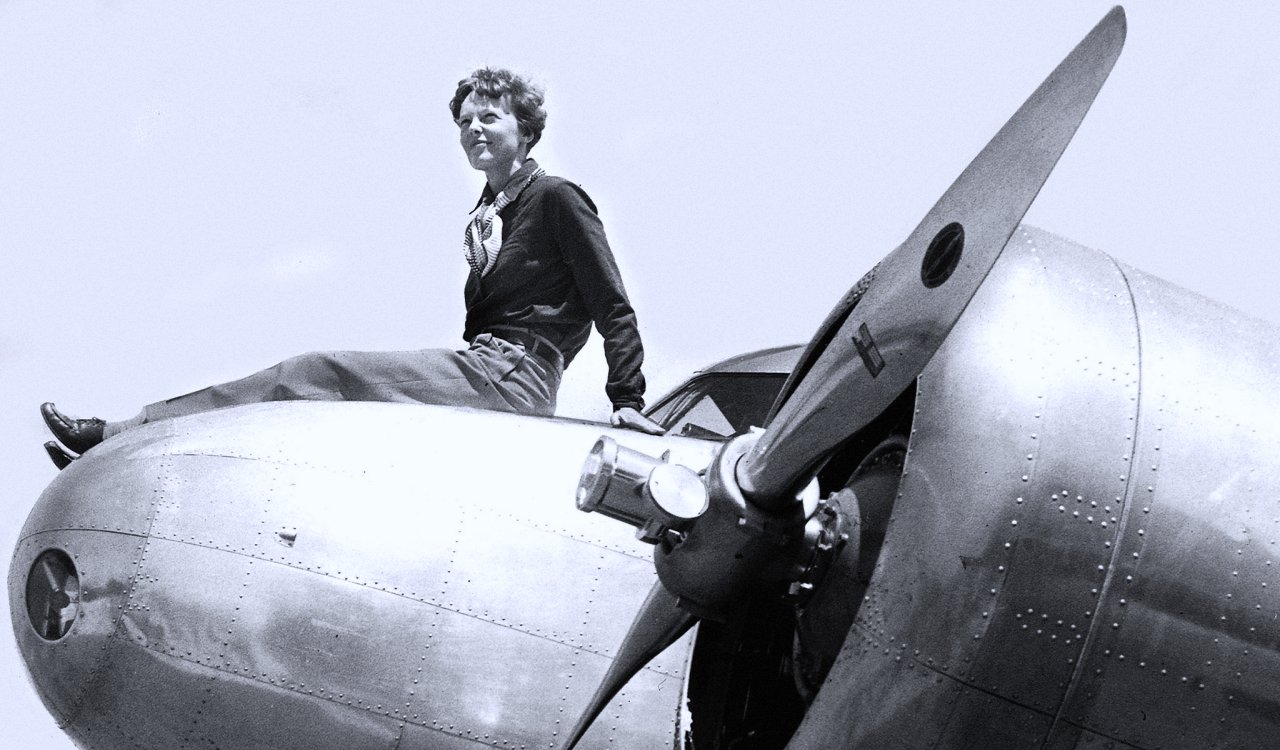
Amelia Earhart Sitting On A Plane
- Year Taken: 1936
Amelia Earhart will always be known most for her disappearance somewhere near the infamous Bermuda Triangle. However, Earhart’s impact on the world of aviation is immense. She was massive in the push for female rights, along with her friend Elenor Roosevelt. She is most famous for being the first woman to complete a solo flight across the Atlantic Ocean. Of course, she won several awards for her accomplishments including the United States Distinguished Flying Flag. She would later be inducted into the National Aviation Hall of Fame. Yet her work on equal rights for women, as well as being instrumental in the formation of The Ninety-Nines (female pilot organization) led to her induction into the National Women’s Hall of Fame. The image above was taken just a year before her disappearance.
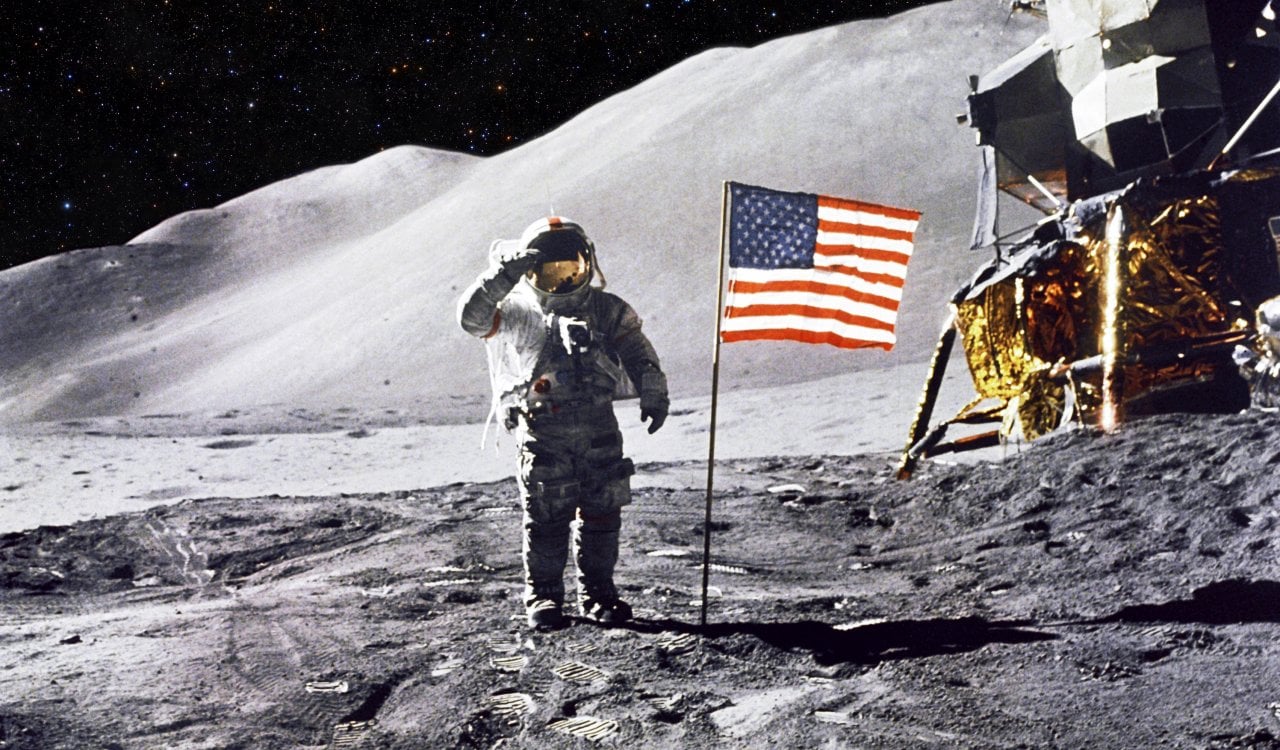
Buzz Aldrin Salute
- Year Taken: 1969
Buzz Aldrin has become more well-known in the last few decades, mostly due to being in the public eye a lot more. Before this, he was known as the “second” man to set foot on the Moon. Neil Armstrong was first, but that does not make Buzz’s accomplishment any less impressive. When on the Moon, the U.S. wanted to have an image taken to show the flag waving and someone saluting. However, the flag could not wave because there is no wind on the Moon. Thus, NASA had to literally assemble a stationary flag to look as if it is waving when it wasn’t. As it wouldn’t be that cool to see a flag down when it was saluted. Buzz was the one who was pictured saluting the flag, which you can see in the image above. Sadly, the lack of knowledge regarding the flag setup started many conspiracy theories.

Camels In An Oil Field
- Year Taken: 1991
Steve McCurry is perhaps the best war photographer that has ever lived. The man has taken so many amazing images outside of this, but his images from wars taking place from the 1970s through the 1990s are incredible. The image above was taken in 1991 during the Gulf War in Kuwait. The image shows camels near a burning oil field there, which had been lit on fire due to the war. Reflecting on his images taken in Kuwait, McCurry claimed: “The darkness caused by the burning oil wells was like a moonless night. The photographs show a scorched, infernal place, but they don’t convey the fine mist of oil that hung in the air and coated my cameras or the deafening roar of the burning wells.” What McCurry gave us in his images was an almost end-of-the-world scenario, telling us the impact of war and the horrors it can cause.
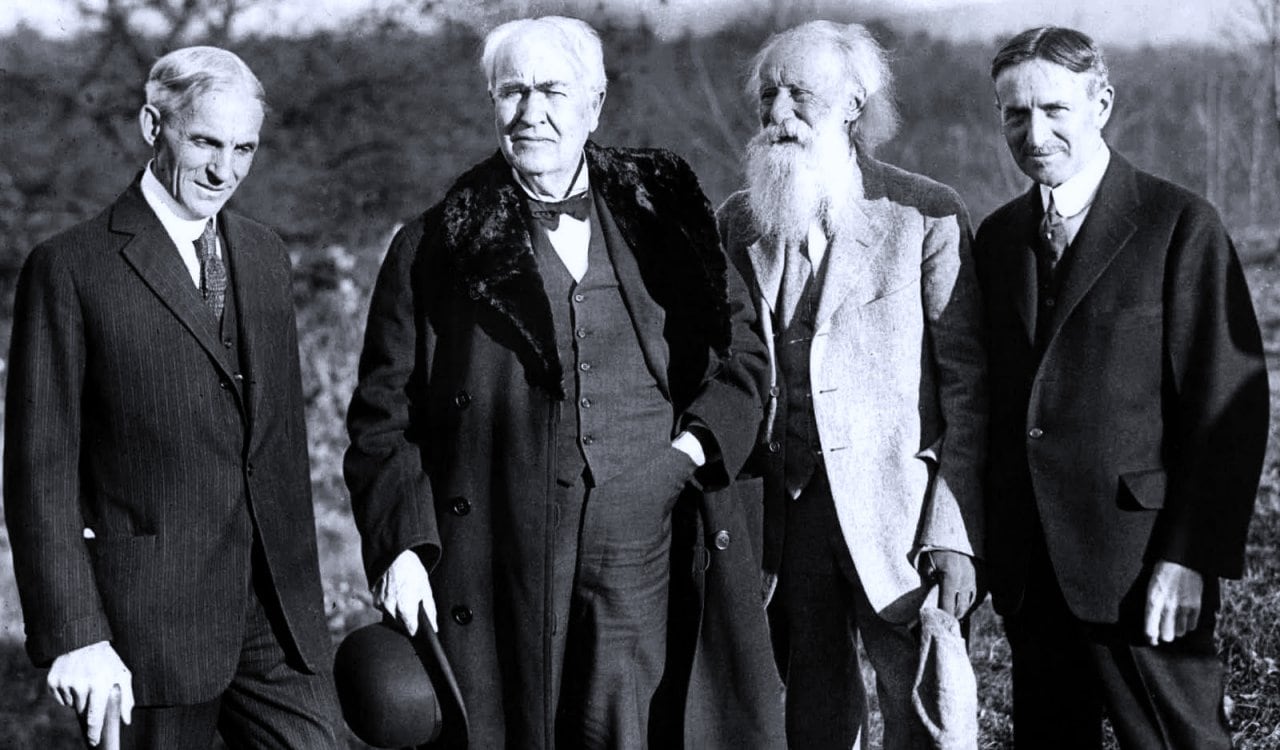
The Four Vagabonds
- Year Taken: 1920s
As odd as it is to see so many historic people in one photo, this actually happened. Known as the “Vagabonds,” the group of Thomas Edison, Henry Ford, Harvey Firestone, and John Burroughs would regularly take trips together. You could say they invented the idea of what would become the RV trip. It seems kind of odd looking back that Burroughs would be such good friends with men who were interrupting the natural world. John was a major naturalist who regularly wrote about this and was well-known for his stance. Edison & Ford were best friends and Firestone was a friend of Ford’s but Edison was his mentor. While they ended up giving us several vintage science photographs along the way, it is this connection that fascinates so many. The group went on trips every year from the mid-1910s through the 1930s.
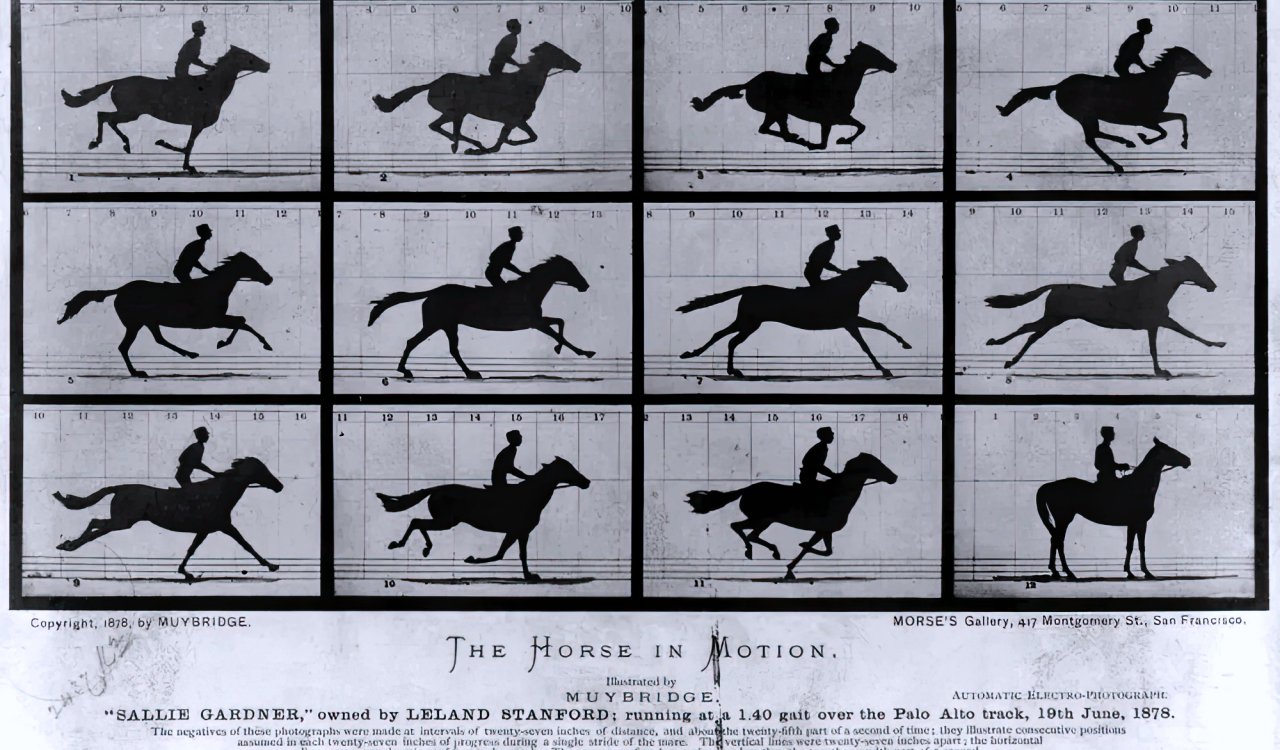
The Horse In Motion
- Year Taken: 1882
One of the most historic vintage science photographs was taken in 1882 by Edward Muybridge. Officially, these were known as cabinet cards that would each show a sequential series of six to even twelve automatic electro-photographs. In this case, it would depict the movement of a horse. While Muybridge shot the photos in June of 1878, additional cards were printed, giving us the single image of the horse seemingly trotting at a high speed. This was the first series of pictures that showed a sense of chronophotography, which was a type of photography that showed phases of movement or “time passed.” Of course, this was traditionally used for scientific study but it would eventually be essential to another area of media…motion pictures. Without “The Horse in Motion,” who knows if movies ever get made?

Steve Wozniak & Steve Jobs
- Year Taken: 1970s
This ranks as one of the coolest vintage science photographs due to the two men and especially what they are holding. Steve Wozniak (left) and Steve Jobs (right) are the founders of the Apple corporation. They are holding the circuit board Woz made, which was used in one of the original Apple computers. We often give Steve Jobs a lot of credit for Apple’s success, but a lot should go to Woz too. Jobs had ideas but Woz was the technical genius who had to make stuff work. Especially early on, Woz was critical to the development of most items. Jobs was a businessman who had a great, creative mind. However, he lacked the technical side that Woz could fill. That made a great partnership…but it sadly did not last. Woz technically left Apple in 1985 but Jobs remained and helped Apple come up with its biggest products.
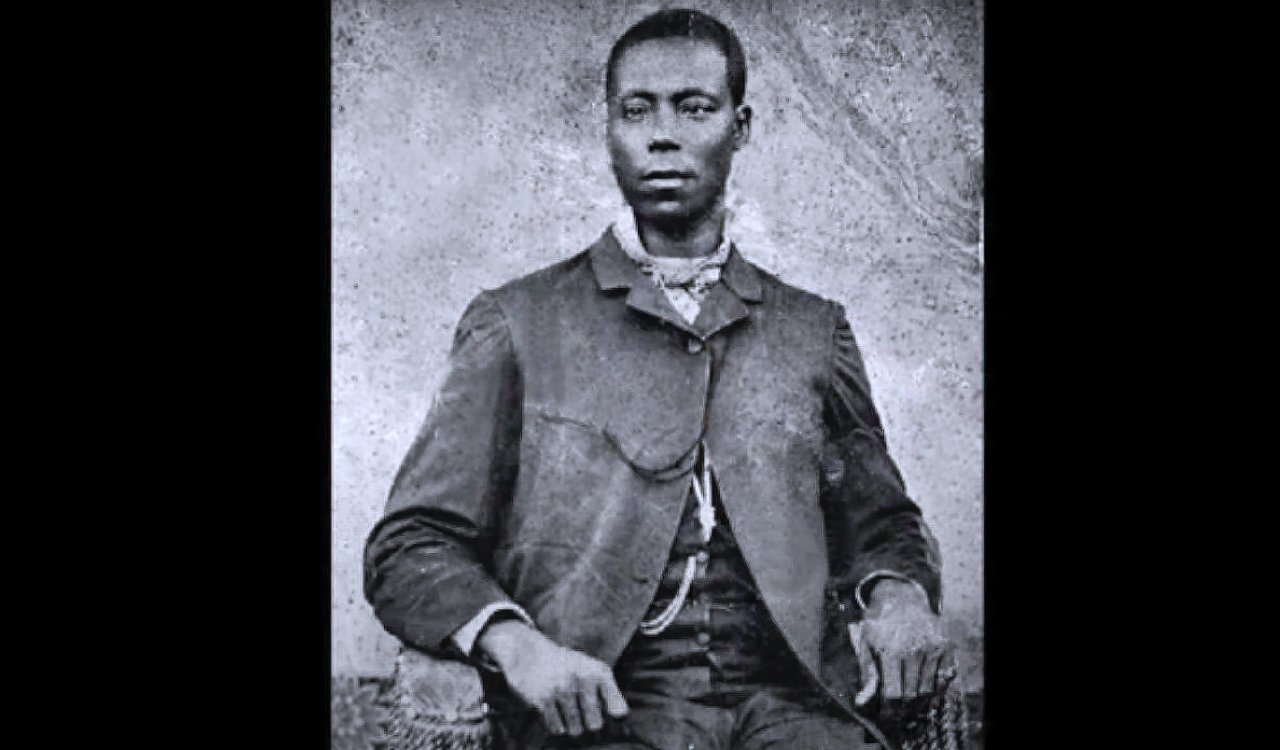
Historic Black Inventor Thomas Jennings
- Year Taken: Unknown
Thomas Jennings was an African-American abolitionist, inventor, & entrepreneur. He lived from 1791 to 1856, allowing him to be alive during some pretty difficult times in the United States. While he was a black man, New York allowed black men to own property and businesses in the early 1800s. The first Jennings opened was a tailoring business but his clothing business on Church Street became one of the largest clothing stores in the city. Yet many customers complained about their clothes being ruined by stains. Jennings decided to experiment with different chemicals that could protect fabric but remove stains. In doing this, the man literally invented dry cleaning! The image above is sadly one of the few surviving images of Jennings, so we had to add it to our vintage science photographs list.
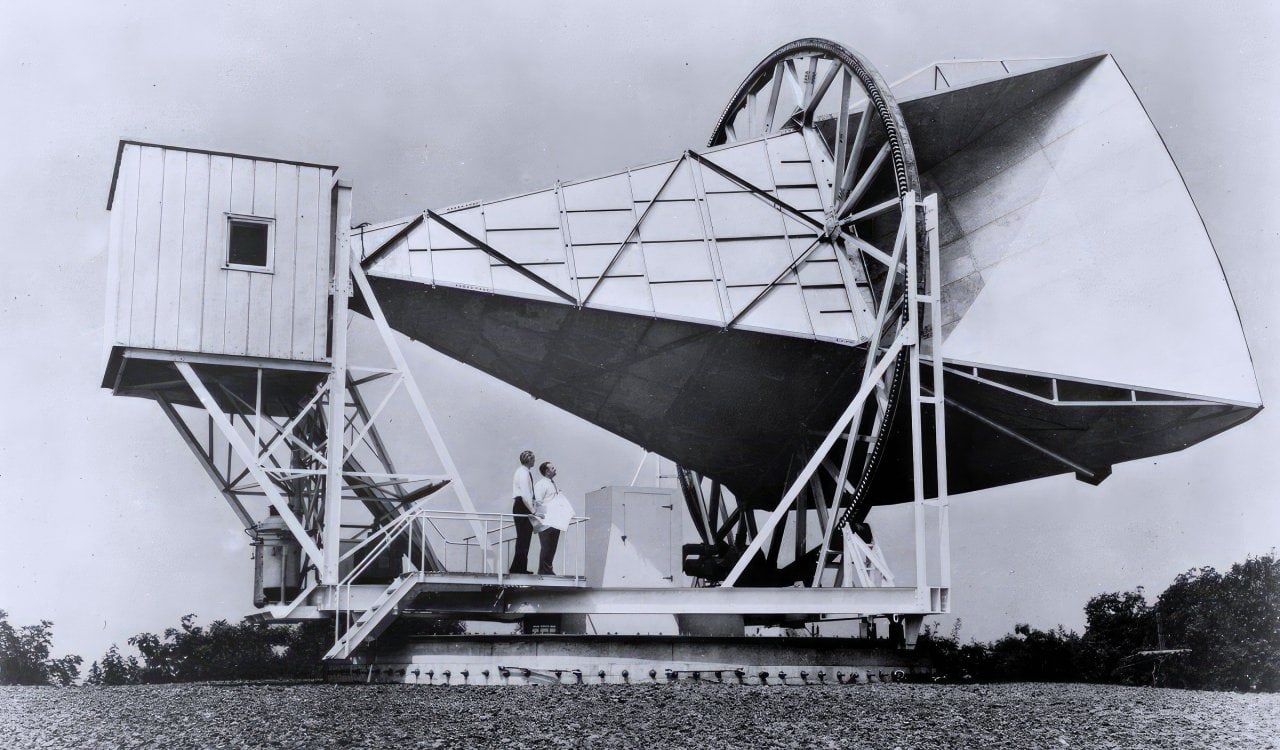
Telescope That Confirmed Cosmic Microwave Background Radiation
- Year Taken: 1964
The Big Bang had already been proposed, but nothing had been entirely proven. Albert Einstein’s equations along with Georges Lemaître’s work had proven the possibility. However, we needed more. Then a slight accident happened in 1963 when Robert Wilson and Arno Penzias seemed to discover Cosmic Microwave Background Radiation. If they did, it would show noise left over from the creation of the universe. They managed to capture an image showing radiation from 380,000 years after the Big Bang. In the image above, both men were wanting to confirm their findings. While their first image was great, they wanted to first make sure the odd static they detected wasn’t caused by something random. Leading to this image of the two men and a giant telescope, which is one of the most interesting vintage science photographs.
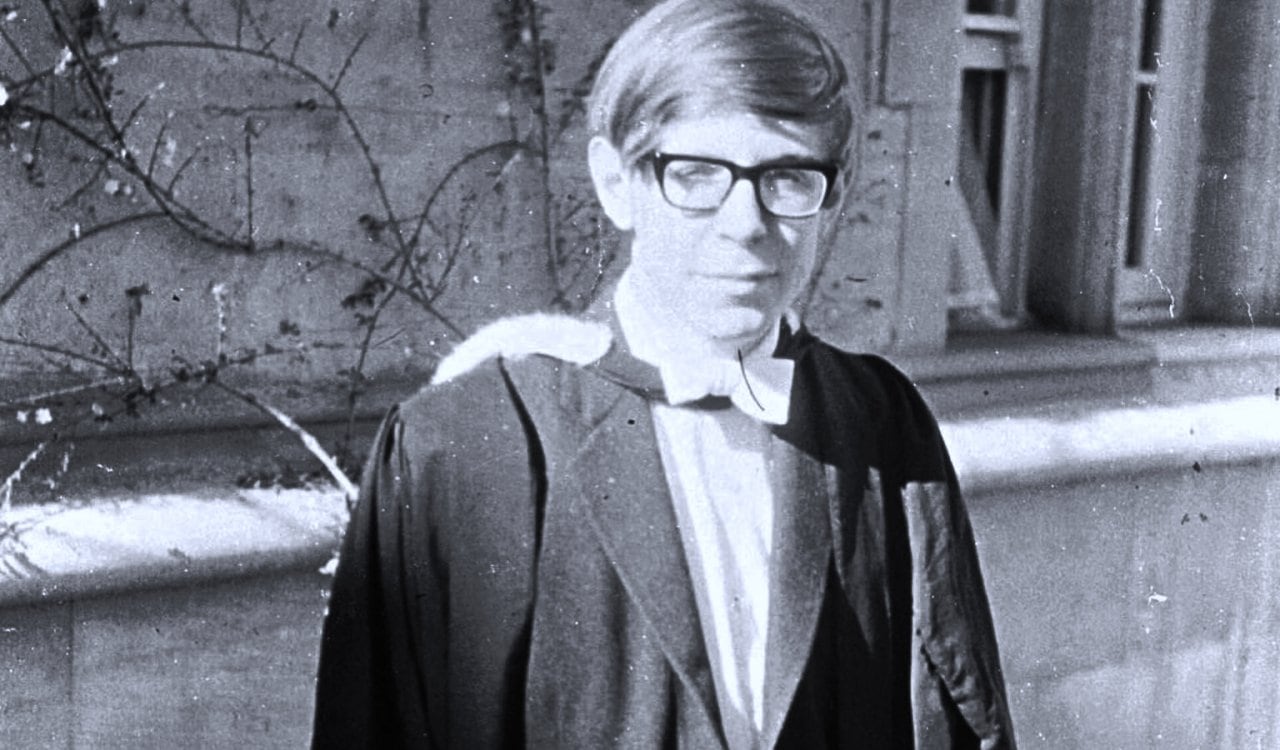
Stephen Hawking Begins His Journey
- Year Taken: 1966
Stephen Hawking was an English theoretical physicist, cosmologist, and author. While he did major work as he aged, he began to do incredible work dating back to his college days at Oxford University & the University of Cambridge. In fact, to achieve his doctoral degree, he wrote his thesis on a concept inspired by Roger Penrose’s theorem of a spacetime singularity in the center of black holes. Hawking applied this same line of thinking to the entire universe. Of course, Hawking was instrumental in the field of black holes. He’s best known for his discovery that found black holes emit radiation. We call that Hawking radiation today. His work made studying black holes possible. Above we see one of the vintage science photographs of a young Hawking who likely did not realize how critical he’d become to science.

Jane Goodall Greets A Baby Chimp
- Year Taken: 1965
Jane Goodall is a noted primatologist who has been one of the massive pioneers in the study of both apes and chimpanzees. However, the bulk of her work has been with chimps. Above, we see one of the most important vintage science photographs ever taken. Hugo van Lawick took the photo for National Geographic for a photo series called “New Discoveries Among Africa’s Chimpanzees.” Above we see Jane greeting a baby chimp named Flint. Goodall was brave to attempt to even touch this chimp, as their protective mother was out of frame but very close. Jane discovered quite a lot in her 60-year career. She is best known for being the first person to observe chimps creating & using tools. She also observed chimps mourning, comforting each other, and even mother chimps adopting orphaned chimps.
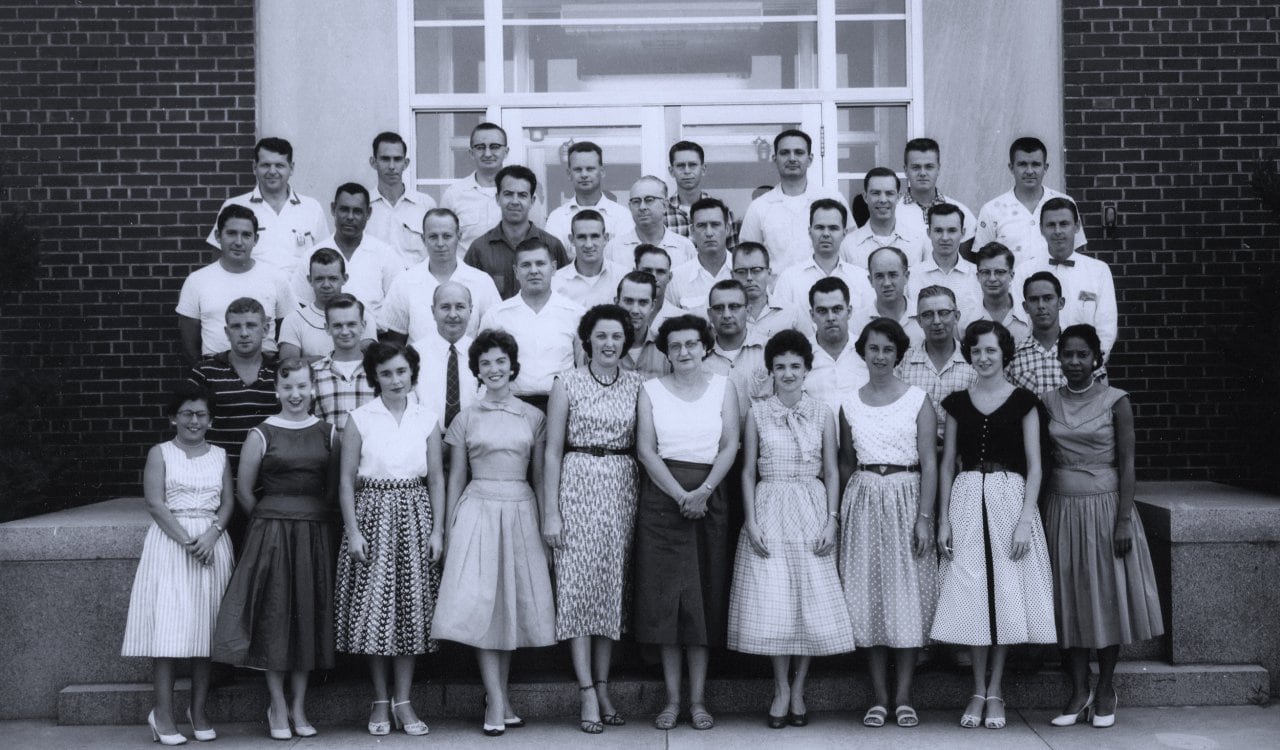
The Human Computers Of NASA
- Year Taken: 1950s
While the movie Hidden Figures was able to shed light on this, it could not reveal everything. The movie’s design was to inform us that women were critical to the success of NASA and the eventual trip to the Moon. This began in the very early stages too. Known as “human computers,” both black and white women were asked to essentially make calculations that would one day make space travel possible. While men were often given credit for their work here, the human computers were women so they were not given credit initially. NASA used so many, that most of the women are still unknown to history. This is why there is currently an ongoing mission to find them all, as NASA did not give them the credit they deserved. Some women have since been recognized for their work, but the other women still remain unknown.

The Hindenburg Disaster
- Year Taken: 1937
In spite of the fact that the Hindenburg Airship went down in flames back in 1937, decades later we still talk about it. The German commercial passenger-carrying rigid airship was the lead ship in the notable “Hindenburg class.” This was the longest class of the flying machine, and it was certainly the largest airship by envelope volume at the time. Zeppelin Company made and even operated it. In the 1930s, airships were thought to be the new form of luxury travel similar to passenger ships in the 1910s. It is interesting that both concepts were abandoned after notable disasters. The Titanic with luxury ships and the Hindenburg for luxury airships. Today, we know the photos of the Hindenburg disaster very well along with Herbert Morrison’s recorded radio eyewitness report from the landing field. Sadly, 35 people died in this disaster.

Alexander Graham Bell On The Telephone
- Year Taken: Unknown
Alexander Graham Bell’s telephone invention is obviously one of the biggest contributions that the world still uses in some form today. Yet early on, Bell was not exactly trying to make what would become the telephone. He was actually trying to make an instrument that could allow deaf people or those hard of hearing to essentially hear the world around them better. The harmonics and vibrational concepts seem to work for what would become the telephone. Bell then patented the first practical telephone device in 1876. Bell is, of course, the co-founder of the American Telephone and Telegraph Company, otherwise known as AT&T. Interestingly, a person as smart enough to capture Bell on the telephone back in his time, giving us one of the coolest vintage science photographs we can view today.

NASA’s Space Shuttle Columbia
- Year Taken: 1981
NASA’s Space Shuttle has been able to deliver a lot of big stuff to the world of space travel. However, it has also been known for the disasters it has caused as well. The image above is from the first launch of Space Shuttle Columbia in 1981. This is why we consider it to be among the vintage science photographs worthy of your attention currently. Columbia was the first ship to launch in the Space Shuttle program, and it went off quite well. Overall, Columbia went on 28 flights for NASA, spent over 300 days in space, and orbited the Earth 4,000 times. Sadly, not every launch was a successful one. In 2003, Columbia disintegrated when it re-entered the atmosphere, which killed all seven astronauts on board. It was only the second Space Shuttle disaster, with the Challenger explosion occurring first in 1986.
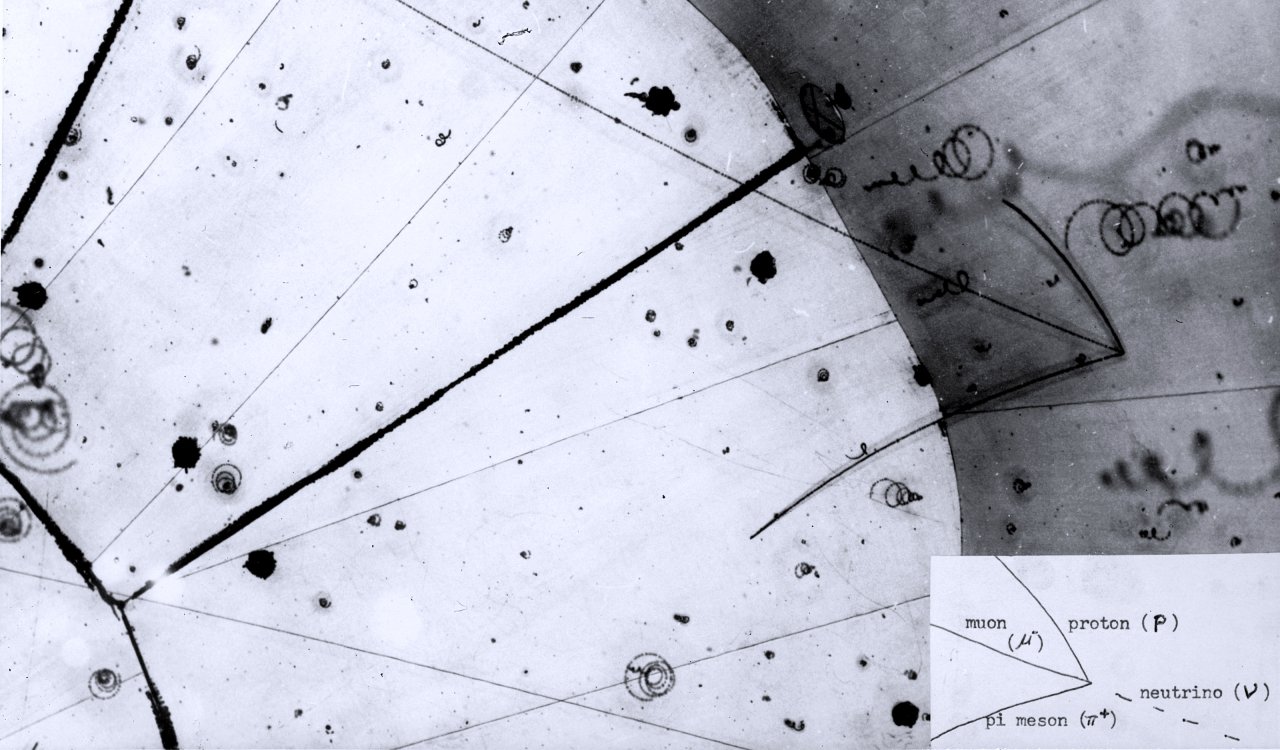
First Neutrino Tracks In Hydrogen Bubble Chamber
- Year Taken: 1970
In 1970, an image of the first neutrino tracks in a hydrogen bubble chamber was captured. The Zero Gradient Synchrotron managed to get the image, doing so inside a 12-foot bubble chamber. In the image, an invisible neutrino strikes a proton where the particle tracks originated. The neutrino then turned into a muon, which is the long center track. The short track is, of course, the proton. The third track, however, is a pi-meson that was created by the collision. Why would we want to capture an image like this? Neutrinos are electronically neutral and its rest mass is so small that it is assumed to be zero. It is also smaller than other known elementary particles outside of massless types. However, we knew that neutrinos were the most abundant particles that have mass in the universe so we needed an image.
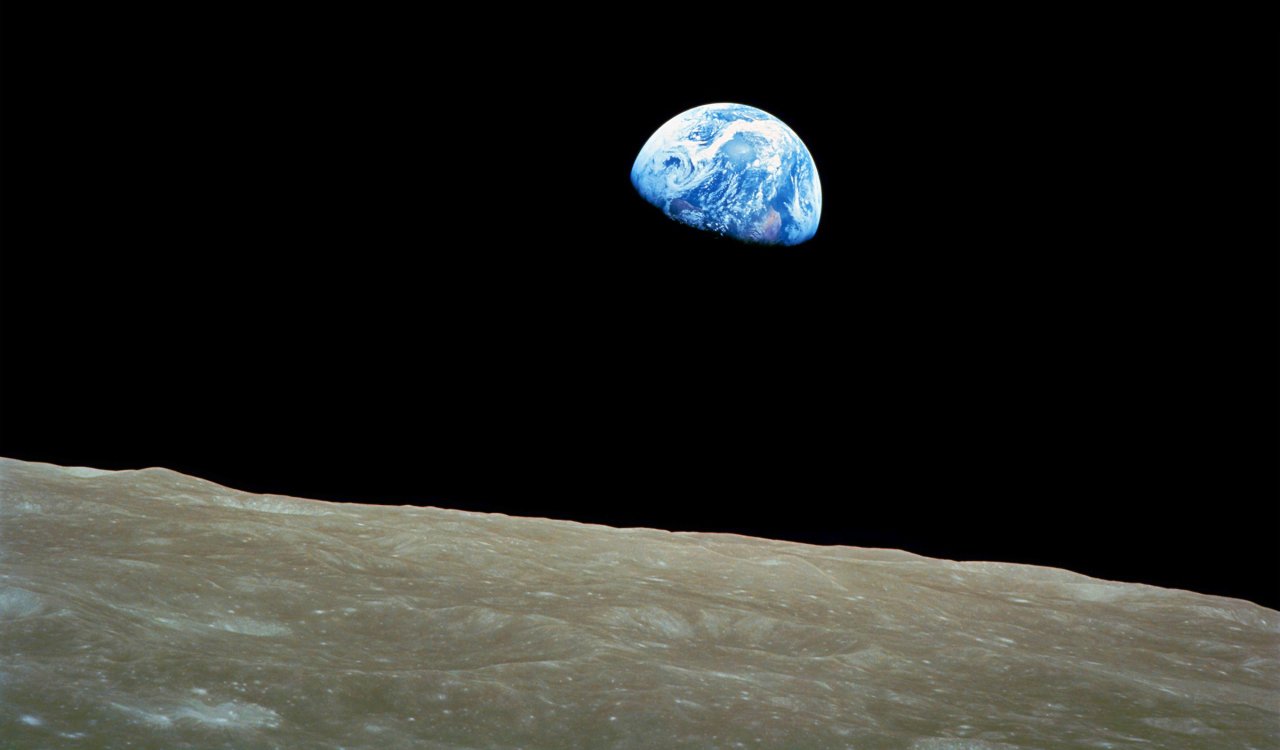
Earthrise
- Year Taken: 1968
Just one year before NASA sent human beings to land on the Moon, the Apollo 8 mission took place. These astronauts would be able to make a trip to the Moon but did not get to land on it, which had to be disheartening. However, the lunar orbit mission was able to give us one of the most notable vintage science photographs that is still used in science textbooks and space documentaries to this day. Taken in 1968 by astronaut William Anders, it was our first look at the “Earthrise” image in color. In 1966, a raster image was taken in black and white by the Lunar Orbiter 1 robotic probe, and it wasn’t great. Anders’ image was so much better and NASA has since used it as a major symbol of their agency. It makes sense, as it is one of the most influential images ever taken.
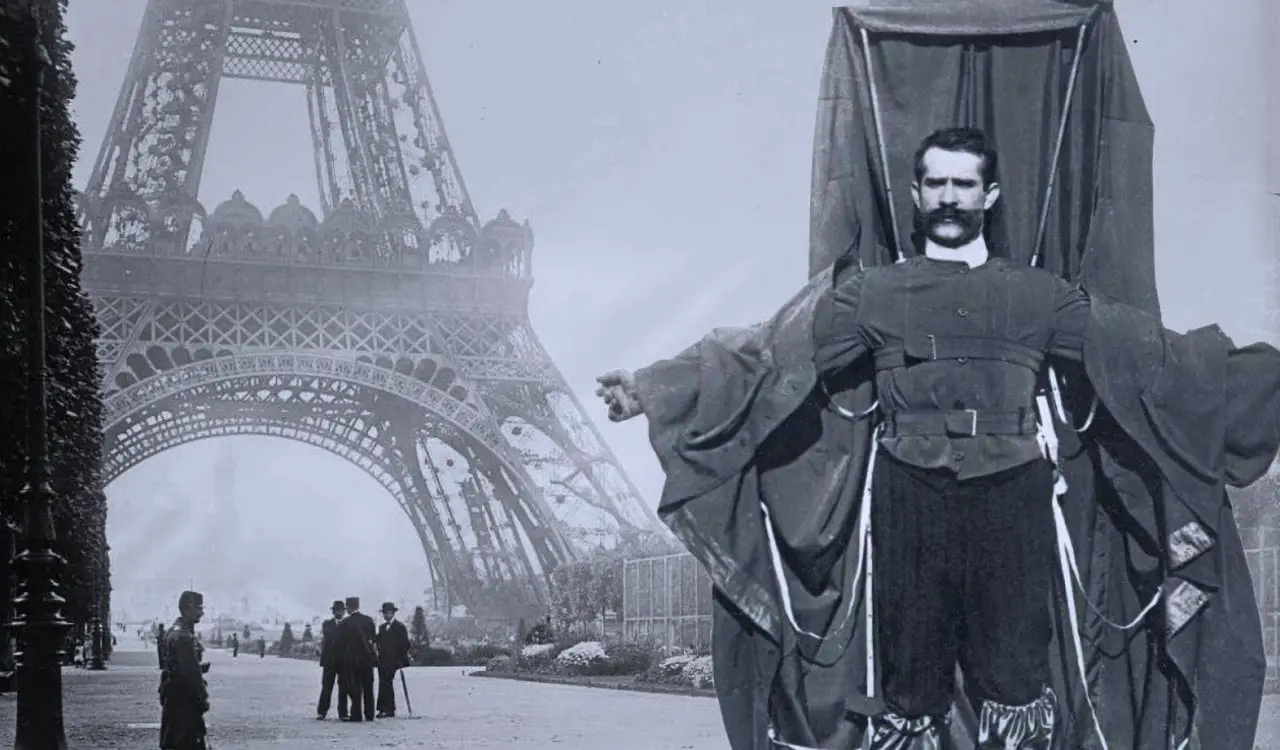
Franz Reichelt Testing His Parachute
- Year Taken: 1912
Franz Reichelt needs to go down in history as a brave man who believed in his own work. He believed in it so much that he was willing to risk his own life to test the product. In 1912, Reichelt, an Austro-Hungarian Tailor who lived in France, wanted to test his new invention. He had developed an early form of the parachute, which you can see in one of the most infamous vintage science photographs above. His invention was a suit for aviators that would convert into a parachute, thus allowing them to survive if they needed to escape their aircraft. He initially tested dummies that he dropped from the fifth floor of his apartment, which had been successful. This led Franz to jump off the Eiffel Tower wearing his parachute suit. However, the invention proved to not be a success, causing Franz to fall to his early death.
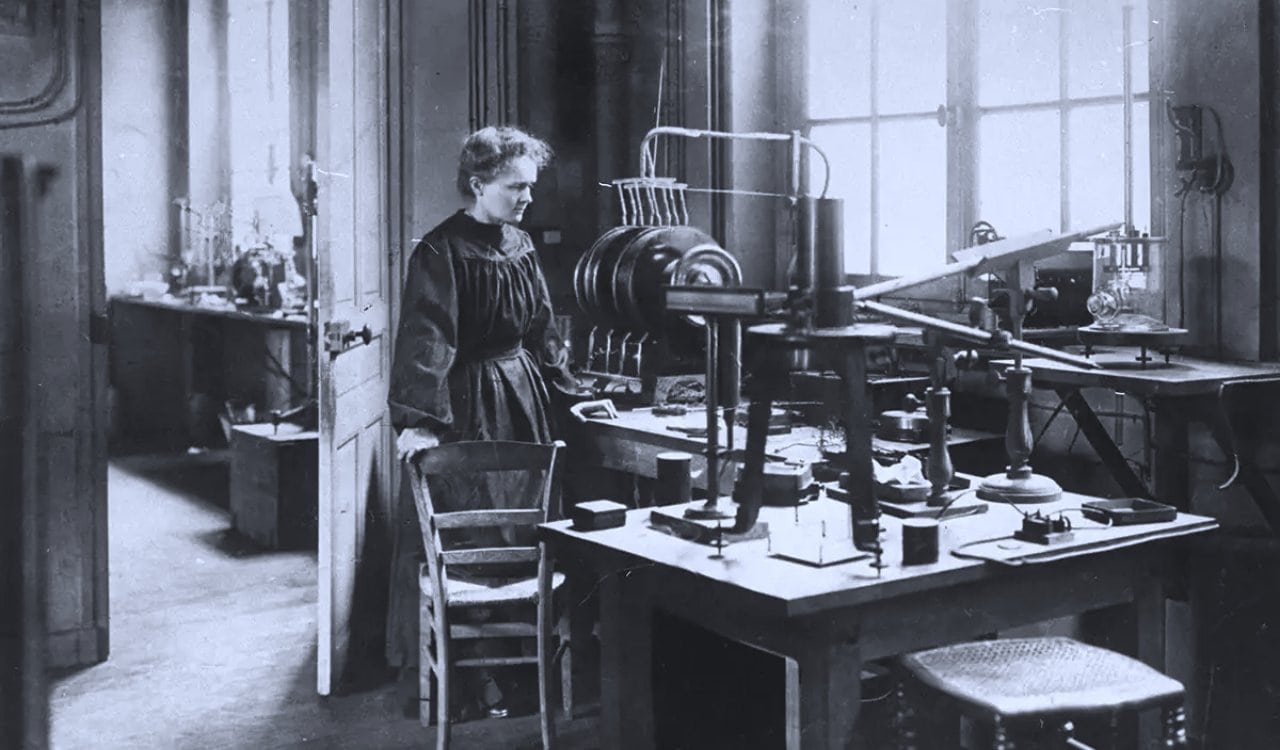
Marie Curie In Her Laboratory
- Year Taken: 1910s
The Curie Family overall should be commended for their work, as they were critical to science. Both Marie and her husband Pierre won a Nobel Prize together and then Marie won another on her own, making her the first person to ever win two. Especially two in different scientific fields. She was also the first female professor at the University of Paris. Curie is most known for her work in the field of radiation. She essentially discovered its existence when studying uranium. Marie Curie also discovered both polonium and radium. She was also a major champion of using radium and other forms of radiation to fight illnesses, especially cancer. While she was known as a researcher, she also invented new techniques for isolating radioactive isotopes. This is actually what she won her second Nobel Prize for too.
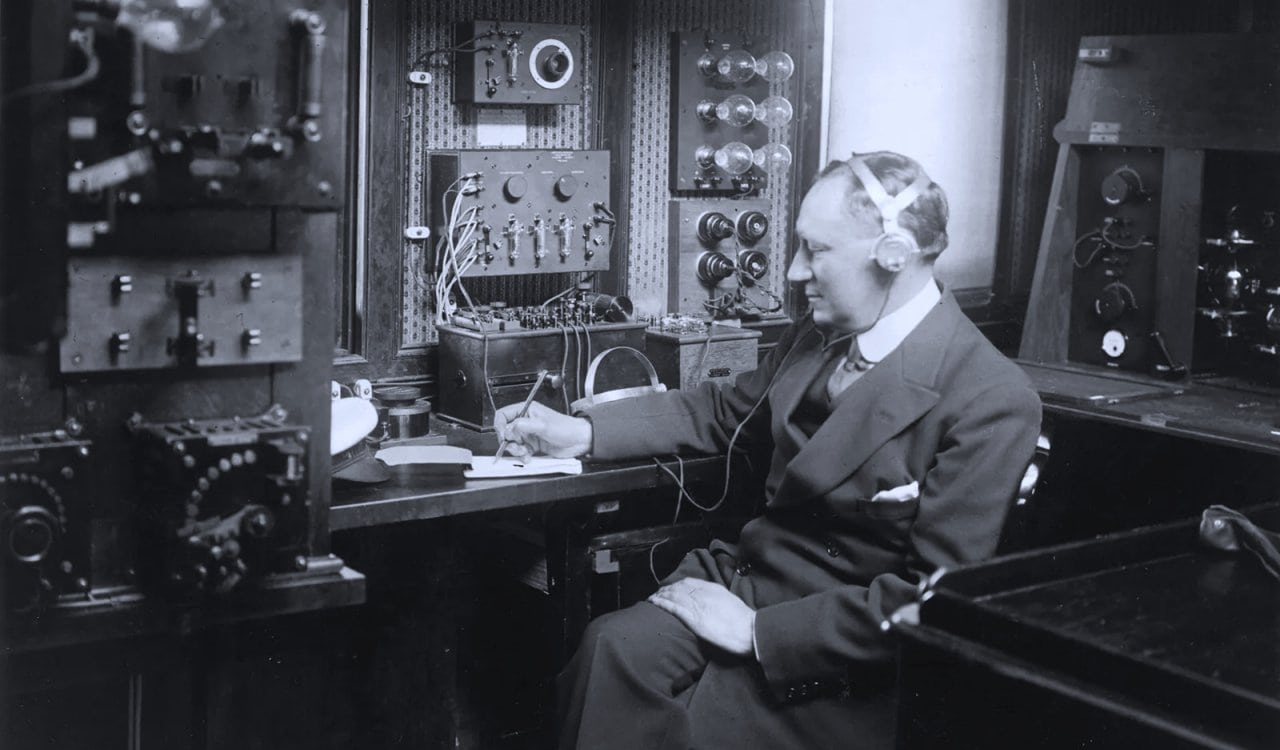
Guglielmo Marconi Playing With His Invention
- Year Taken: 1920s
Italian inventor Guglielmo Marconi is credited for inventing the practical radio wave-based wireless telegraph system. Which is, well, what we have used for radio signals of all kinds. Including the radio that we know and love for entertainment purposes. That led to Marconi sharing the Nobel Prize in Physics in 1909 with Karl Ferdinand Braun. Of course, after Marconi invented the radio which would become a massive invention we still use well over 100 years later, he became an entrepreneur and noted businessman. Many began to see the value of Marconi’s invention beyond entertainment, particularly after ship disasters like the Titanic. Which allowed the Marconi Company to create radio devices for communication. Seeing as radio signals could likely reach further distances with very little lagging issues.
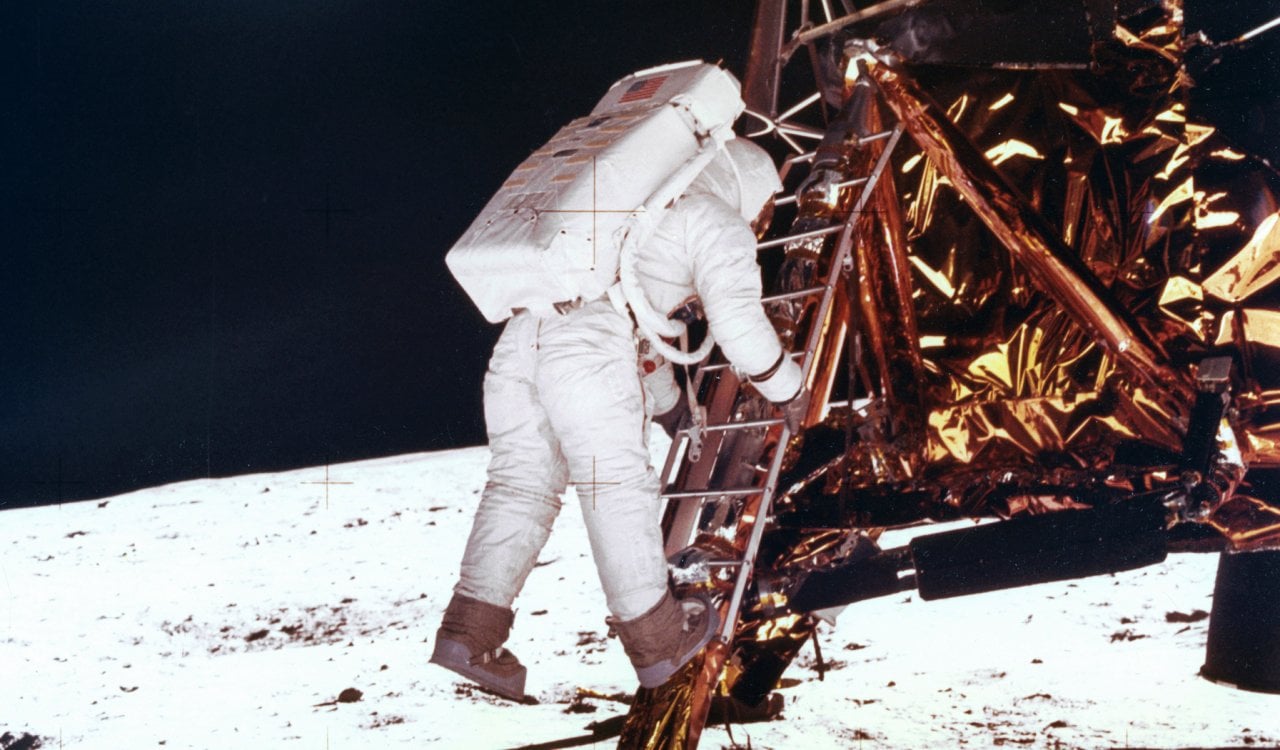
One Small Step For [A] Man…
- Year Taken: 1969
Neil Armstrong is perhaps the most famous astronaut to ever live. Armstrong was so critical to this territory that without him…a lot of things might have never taken place. Not only was Armstrong a skilled test pilot, but he was also basically a genius. He led the Apollo Mission to the Moon, but this was earned due to his previous work. Neil was the command pilot for Gemini 8, where he performed the first docking of two spacecraft, though it was aborted due to a stuck thruster, among other things. He then took part infamously in Apollo 11’s mission to the moon where he was the first human to step foot on another stellar surface. Armstrong later became a major asset as the Deputy Associate Administrator for Aeronautics at NASA. He then became a professor and even helped investigate both the Apollo 13 & Challenger disasters.
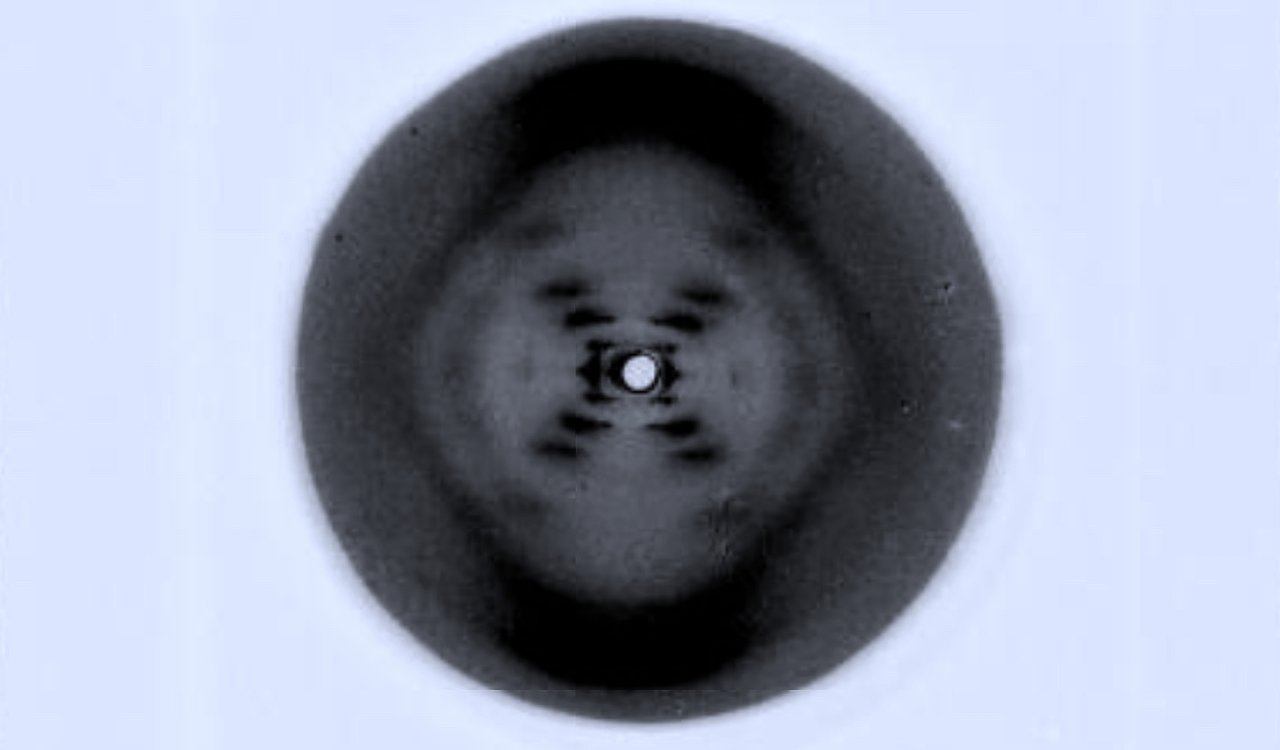
Photograph 51
- Year Taken: 1952
Photograph 51 is one of the most important vintage science photographs that has ever been taken. It is often hard to understand what you’re looking at when you view it, but this is an x-ray-based fiber diffraction photo of a paracrystalline gel, composted of DNA fiber. The image is often attributed to Rosalind Franklin, however, the image was actually taken by Raymond Gosling. He was a graduate student working under her supervision at King’s College in London. Many people feel it would have made more sense to give this image a specialized name, so why Photograph 51? Apparently, it was tagged as “Photo 51” because it was the 51st diffraction photo Franklin had taken or had been part of taking. This image basically allowed us to identify the structure of DNA, which was crucial and historic to the scientific community.

Pale Blue Dot
- Year Taken: 1990
The Pale Blue Dot image is widely considered one of the most important images ever taken in the field of science. While NASA used the Voyager 1 Space Probe to capture the image, they were not initially interested in doing so. Voyager had already completed its primary mission and was headed out of our solar system, but NASA turned the camera around to take just one last photo of the Earth from beyond Pluto. They did so at the request of historic science communicator, astronomer, and author, Dr. Carl Sagan. Of course, Sagan would use the term “pale blue dot” in his reflections on the photo’s significance in books along with any televised appearances he was part of. The image really makes us realize how small we are, and yet the image was still captured just outside our solar system. The expanse of space is mind-blowing.

Nikola Tesla Just Living Life In His Lab
- Year Taken: 1899
Perhaps the coolest image on our list of vintage science photographs, it only makes sense for it to involve Nikola Tesla. The genius who invented and designed the modern alternating current electric supply system, what we know today as “AC Power.” This is the same thing you use for plugs in your home as well as in many other power systems. He initially worked for Thomas Edison, who was a heavy believer in his direct current or DC system. Yet DC could not travel very far, leading to Tesla’s inventive AC concept that could travel for longer distances. Tesla also invented the wirelessly controlled boat among other things, and notably died with several invention ideas in his writings. One of which was claimed to be about teleportation and/or time travel. Perhaps we’ll never truly know for sure.
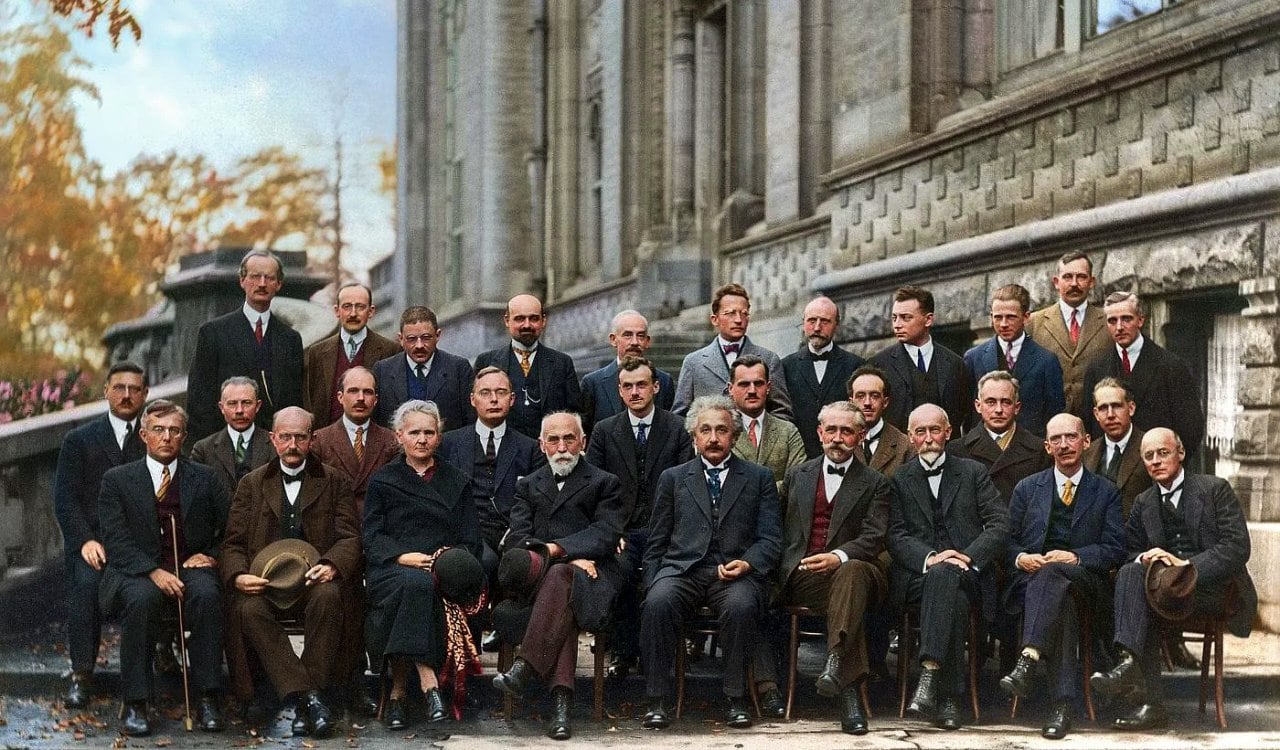
Most Intelligent Photo Ever Taken
- Year Taken: 1927
The image above used to be in only black and white but has since been colored by many different people. It was taken in 1927 in Brussels by Benjamin Couprie at The Fifth Solvay Conference on Quantum Mechanics. This is noted as the “most intelligent photo ever taken” simply due to the people in the image. In it, you’ll easily see Albert Einstein, Max Plank, and Marie Curie in front as well as Erwin Schrödinger in the back. However, others in the photo include Max Born, Niels Bohr, Werner Heisenberg, Wolfgang Pauli, Édouard Herzen, Louis de Broglie, Charles-Eugène Guye, Arthur Compton, and many more. All of which made a massive impact on humanity in some form or another. The fact that we have an image of all of these people in one place, at one time, is still amazing to us.
Where Do We Find This Stuff? Here Are Our Sources:
United States Department of Energy
United States National Archives and Records Administration (NARA)
National Aeronautics and Space Administration (NASA)
United States Library of Congress
United States Environmental Protection Agency (EPA)
Nuclear Regulatory Commission
International Atomic Energy Agency (IAEA)
European Space Agency (ESA)
Canadian Space Agency
SpaceX
American Physical Society (APS)
National Air And Space Museum
The Franklin Institute
King’s College London
Oxford University
Massachusetts Institute of Technology (MIT)
Harvard University
University of Chicago
Carnegie Mellon University
Columbia University
Stanford University
Smithsonian Magazine
National Geographic
The Guardian
